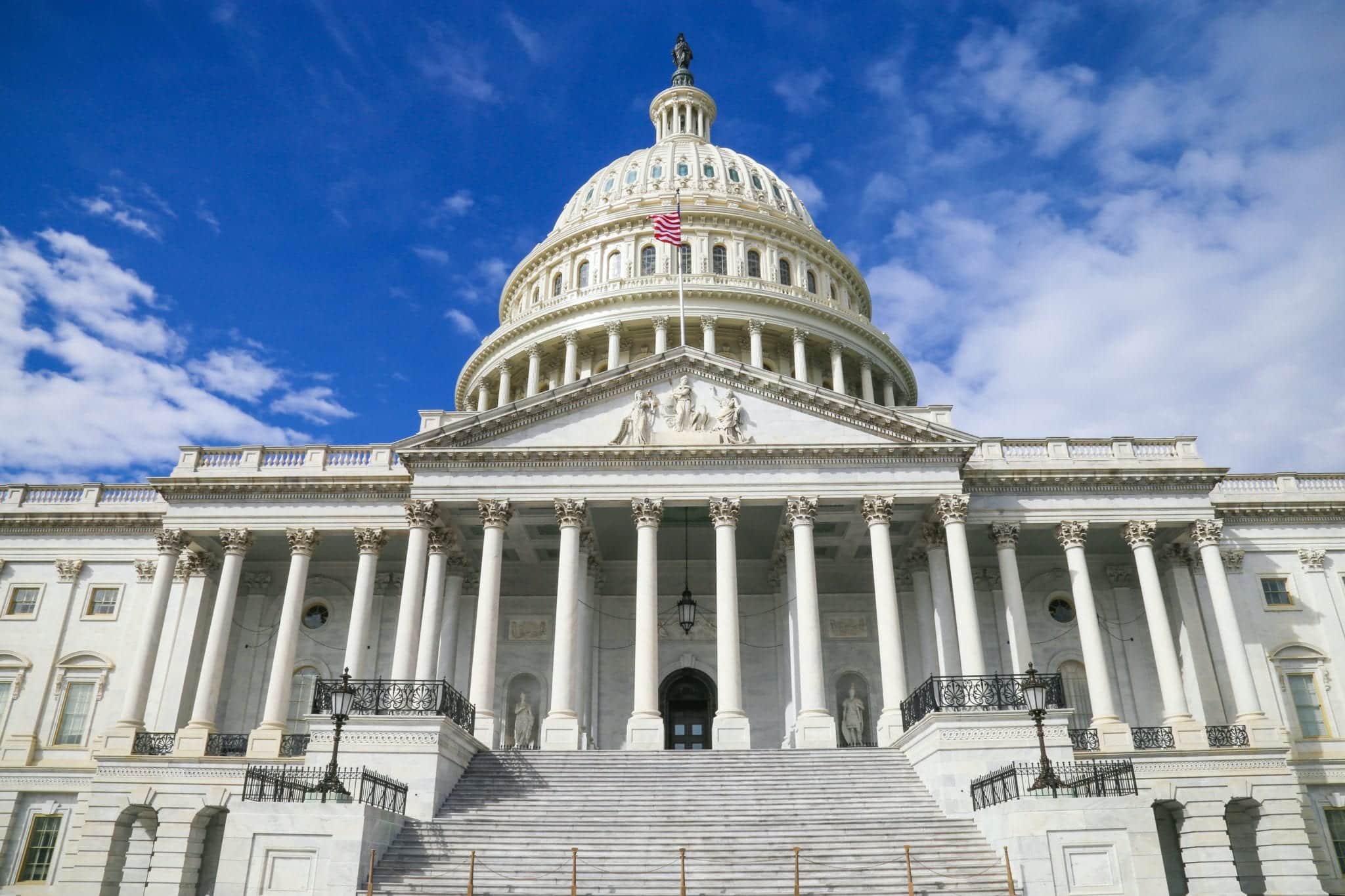
Introduction
The Frank R. Lautenberg Chemical Safety for the 21st Century Act of 2016 brought sweeping updates to the Toxic Substances Control Act (TSCA) — the nation’s then 30-year old reigning law for chemicals management and bringing new chemicals to market. Among those changes, the amended TSCA requires the U.S. Environmental Protection Agency (EPA) to make one of several determinations regarding whether a new chemical presents unreasonable risk of injury to health or the environment, and/or whether there is enough information to make such determination, prior to commercialization.
Read More…
As part of this process, the revised TSCA Section 5 requires any company that plans to manufacture — including import — a new chemical substance for a commercial purpose to provide EPA with notice and obtain EPA’s approval before commercialization. This notice is known as a pre-manufacture notice (PMN). Under the TSCA statute, EPA has 90 days to review the PMN submission and make a determination about effects on human health and/or the environment by evaluating any intended, known or reasonably foreseen uses of the chemical, without consideration of costs or other non-risk factors. EPA’s review must consider effects on susceptible populations such as workers, children and communities located near industrial facilities.
However, the mandate of evaluating PMNs prior to commercialization has led to a significant backlog at EPA and delays in PMN approvals, exceeding the 90-day review period specified in the statute. This has resulted in companies delaying or canceling introduction of new chemical technologies to the U.S. market, or seeking foreign markets for new products. Where prior to the TSCA amendments, companies could begin commercial activity 90 days after a PMN submission, companies now often wait a year or more before EPA completes evaluation of a PMN, leading to uncertainty and derailed market innovation.
The U.S. paint and coatings industry is a modern, globally competitive industry that supports a substantial number of high-paying jobs in the United States. The American Coatings Association (ACA) represents the nearly $30 billion U.S. paint and coatings industry, operating in all 50 states, and employing over 311,000 people throughout its products’ supply chain. Notably, ACA’s membership comprises 90 percent of the industry, representing manufacturers of paints, coatings, sealants and adhesives, including downstream processors and users of chemicals, as well as chemical manufacturers who either make or import new chemicals, and as such, participate in the TSCA PMN program.
In this Issue Backgrounder, ACA outlines the deleterious effects of the PMN backlog and the pitfalls of the lack of transparency with which EPA evaluates new chemicals. By identifying some of these barriers, ACA hopes Congress can help bring greater efficiency and clarity to the EPA process so that it benefits manufacturers, EPA, and the environment.
Adverse Effects of PMN Delays
As noted, the revised TSCA directs EPA to evaluate potential risks from new and existing chemicals before they can enter into commerce (market), and act to address any unreasonable risks chemicals may have on human health and the environment. It also requires EPA to keep an updated inventory of chemicals in commerce, the “TSCA Inventory.” If a chemical is on the TSCA Inventory, the substance is considered an “existing” chemical substance in U.S. commerce. Any chemical that is not on the Inventory is considered a “new chemical substance.”
Read More…
Once a manufacturer submits a PMN, EPA is required to evaluate it within 90 days of receipt (TSCA 15 U.S.C. §2604(a)(1)(B)). Since June 2016, EPA’s backlog has typically remained around 400 to 500 PMNs. However, as of March 2020, EPA reports 290 PMN’s under review, with submitters having withdrawn 277 PMNs since the Lautenberg amendments took effect in June 2016.1 This bottleneck is having tangible negative effects on both manufacturers and the innovative products they bring to market.
Stifling Innovation, Shift to Foreign Markets
ACA member companies each typically file around one to 30 PMNs per year; the paint and coatings industry as a whole spends over $15 million annually2 on research and development largely focused on new products and unique applications, such as “smart” and multifunctional coatings that provide enhanced functionality and utility in coatings products.3
Innovation in new chemicals drives improvements that minimize effects on the environment and improve product safety, including lowered emissions and toxicity. Given EPA’s PMN delays of a year or more, and the uncertainty of the process, many companies have abandoned new, technology-driven products with the chemicals awaiting approval, and focused on developing products with existing chemicals. This stifling of innovation has another adverse consequence: because companies cannot introduce these chemicals in the U.S. market, they have shifted focus to introducing the products on foreign markets, putting the U.S. market at a competitive disadvantage.
But that’s not all.
Using Unintended Exemptions, Data Delays
As a result of this regulatory uncertainty, ACA members are increasingly using the polymer exemption to PMN requirements, where possible. The polymer exemption applies to a multi-chain molecule consisting of a repeated sequence (or a “monomer”). Using authority under §5(h)(4) of TSCA, EPA determined that “new” polymers meeting certain criteria specified in a rule do not present a unique unreasonable risk to human health or the environment as commercially used under TSCA. Where the “new” polymer meets EPA’s criteria, it is considered adequately similar to a polymer already on the Inventory. Consequently, the “new” polymer is not listed on the TSCA Inventory.
Manufacturers are increasingly using this exemption, but doing so severely limits the market both domestically and globally. Utilizing this polymer exemption, or other exemptions, such as the low-volume exemption, increases risk of a product being rejected by consumers who typically prefer all listed chemical components are registered on the TSCA Inventory. Similarly, other countries sometimes require all chemical components be listed separately on the TSCA Inventory prior to allowing market access in the foreign jurisdiction.
While EPA has made some progress toward processing all new PMN applications, it has not yet addressed how it will simultaneously eliminate backlog — neither providing relief or direction to industry, and further restricting the ability to bring new, environmentally innovative products to market. What’s more, ACA members face regulatory uncertainty in planning activities involving new chemicals. ACA members report that EPA does not have a consistent approach to evaluating PMNs, because the evaluation strategy might change depending on the identity of the reviewer, creating greater uncertainty for manufacturers. The lack of transparency during the review process leads to further delays.


Lack of Transparency, Clarity in EPA New Chemical Review Creates Greater Uncertainty
Compounding the PMN backlogs, the deleterious effects on manufacturers, and the limits placed on introducing new, more environmentally and technologically advanced products on the market, are the convoluted and unpredictable processes of PMN review and subsequent regulation, having a far-reaching effect, beyond merely restricting commercial use of a chemical.
Read More…
When EPA approves a chemical PMN, it is usually via issuing a TSCA 5(e) Consent Order to the PMN submitter and/or by issuing a Significant New Use Rule (SNUR), regulating use by any other company, based on its evaluation of the chemical. The SNUR regulatory mechanism places conditions on the manufacture, import, processing, or use of a chemical, usually replicating conditions imposed on the PMN submitter in a Section 5(e) order. SNURs authorize use of chemicals subject to restrictions such as personal protective equipment (PPE) requirements; restrictions to discharge and/or emissions; and restrictions on use, among other restrictions. Companies handling these chemicals are also required to maintain records related to their use and communicate restrictions to downstream users.
Notably, with issuance of a SNUR, EPA authorization extends to any businesses intending to conduct a commercial activity with the chemical (that is, manufacture, import, processing or use), whereas an EPA Consent Order directly responding to a PMN only authorizes the PMN submitter to conduct specified commercial activity with. the chemical. In addition, other EPA requirements are triggered with issuance of a SNUR, such as reporting at lower thresholds under the Chemical Data Reporting (CDR) reporting requirement and reporting exports under section 12b. Consequently, any user of a SNUR substance and the PMN submitter must demonstrate compliance with the SNUR conditions and any other requirements the SNUR triggers.
Since August 2018, EPA has published approximately 603 proposed SNURs. As of March 2020, EPA has finalized about 386 SNURs. Typically taking 12-14 months to finalize, SNURs have created even more of a backlog that have further confused manufacturers. ACA members cannot discern a clear decision-making process for how EPA decides to issue a consent order or place a chemical into a SNUR process, which is troubling.
This confusion and lack of clarity in EPA’s process is made messier by EPA’s current practice of identifying “reasonably foreseen uses” during PMN review and subsequently issuing a SNUR requiring notification if a company would like to begin an identified reasonably foreseen use. Upon receiving notification, EPA would then evaluate the reasonably foreseen use. EPA’s process for identifying reasonably foreseen uses — possible future uses not identified by the PMN submitter — does not have clear parameters and its practice of reserving evaluation for a notification responding to a SNUR may not be authorized by statute, as challenged in NRDC v. EPA.4
ACA and its members want EPA to redress these problems and have offered constructive solutions.
ACA’s Constructive Feedback
Throughout the PMN development process, ACA and its members engaged with EPA, to seek clarity and answers from the agency that would streamline the process in a way that would be beneficial to the agency, industry, and the environment. ACA suggests the following recommendations for EPA’s PMN process: limit consideration of and clarify “Reasonably Foreseen Uses,” and provide the PMN submitter with transparent updates throughout the process.
Read More…
Limit Consideration of and Clarify “Reasonably Foreseen Uses”
Both industry and NGO’s are concerned about EPA’s consideration of reasonably foreseen uses when evaluating PMNs, being possible future uses of a chemical. With changes implemented by the Lautenberg Act, EPA not only evaluates uses identified by the PMN submitter, but also those “reasonably foreseen” uses EPA identifies. ACA has repeatedly asked EPA to clearly define “reasonably foreseen” uses. ACA urged the agency to develop a set of guidelines or protocol for the agency to evaluate reasonably foreseen uses, thereby adding transparency to the entire process.
Notably, several member companies have submitted PMNs to EPA for new chemicals that are only to be used in very specific uses (i.e., specific industrial processes, or not for commercial or consumer use). Attempts to identify reasonably foreseen uses for such a submission can take time while yielding no results, as the chemical is limited to a highly specialized use, identified by the PMN submitter.5 A set of clearly defined guidelines and adherence to stronger transparency protocols, where information is communicated in a timely manner, would help ensure that EPA is focusing its resources on evaluating the most relevant uses that may pose a risk to human health and the environment with adequate data to make accurate determinations.
Provide the PMN Submitter with Transparent Updates throughout the Process
ACA also recommends that EPA’s 90-day review period start when the agency receives a completed PMN submission and end with issuance of a consent order, or a SNUR, where appropriate, without intermediate suspension of the timeframe, unless the agency and submitter agree to an extension. In fact, TSCA mandates EPA follow this procedure. ACA maintains that EPA should be able to decide early in the review process whether it believes the details listed in the PMN will result in a SNUR or a consent order. ACA urges the agency to expedite the process as much as possible, so that manufacturing can commence.
Recognizing that the PMN review process is complex, requiring coordination between the submitter, the program manager, the toxicologists, engineers and a variety of other related departments, ACA has repeatedly underscored to EPA the need for a more transparent and open exchange of pertinent documents and assessments back to the submitters. ACA believes this would streamline the process and ensure that all issues are acknowledged in a timely manner.


EPA Framework Document, Room for Improvement
In December 2019, EPA published an updated document outlining its strategy for evaluating new chemicals: “New Chemicals Decision-Making Framework: Working Approach to Making Determinations under Section 5 of TSCA” — an update from an initial November 2017 version. In February 2020, ACA submitted extensive comments on the framework to the agency, echoing many of its calls for clarity and transparency to help assure efficient, thorough, and reasonable review of chemicals under Section 5.
Read More…
Briefly stated, ACA urged the agency to consider the following steps to improve the New Chemicals Review Program.
- EPA should develop methods of identifying reasonably foreseen uses that are timely, predictable and consistent and that such uses are communicated to PMN submitters as early in the process as possible;
- EPA should not consider uses beyond those intended, known or reasonably foreseen;
- EPA should re-include descriptions of data requirements and overall process contained in the June 2018 Working Approach that were omitted from the December 2019 revision;
- EPA should coordinate with OSHA and utilize OSHA’s expertise when determining PPE and other worker protections;
- EPA should not contradict representations made in NRDC v. EPA related to its SNUR policy and provide additional explanation for implementing the SNUR policy after dismissal of that petition for review; and
- EPA should identify resources and/or process changes necessary to complete reviews within the 90-day requirement.
ACA’s industry members would also benefit from further clarification and transparency from EPA through guidance and further enhancements of EPA’s PMN review process. ACA believes that further engaging PMN submitters will facilitate more accurate and timely chemical evaluations, by providing additional opportunities to submit necessary information during review. To reiterate, ACA encourages EPA guidance to provide information about the following:
- How EPA calculates the 90-day period for PMN review:
- Criteria for issuing a SNUR vs. a TSCA 5(e) Consent Order;
- Further definitions and/or descriptions related to identification of “Reasonably Foreseen Uses;”
- Additional procedures for communication with PMN submitters throughout review with additional opportunities to supplement a PMN application with data addressing issues raised by EPA during the review process; and
- Protocols for increased transparency.
A Stronger Program, Working Together
ACA believes that if EPA can improve its New Chemical Review process, bringing more transparency to its program, it’s a win-win for all. EPA will expedite its process, adhering to the TSCA statute mandates and dig out of its PMN and SNUR backlog. Industry will have more clarity on the process and be able to bring innovative products to market. Both downstream users of these chemicals and the environment will benefit from the new technologies these products deploy.
Read More...
ACA urges Congress to review EPA’s PMN process, procedures and available resources to assist the agency in meeting its mandates to evaluate new chemicals within the required 90-day timeframe, allowing EPA to create a robust New Chemicals Review program that protects public health and the environment.
ACA and its members remain committed to working with Congress and EPA to build and implement a stronger, more transparent, and workable federal chemicals management program for years to come.

For More Information
To learn more about this issue and ACA’s perspective, please contact:
Heidi McAuliffe
Vice President, Government Affairs
American Coatings Association
hmcauliffe@paint.org
202-719-3686
Riaz Zaman
Counsel, Government Affairs
American Coatings Association
rzaman@paint.org
202-719-3715
Sources
1 EPA maintains updated information online about the number of PMNs under review and related information at: https://www.epa.gov/reviewing-new-chemicals-under-toxic-substances-control-act-tsca/statistics-new-chemicals-review#stats
2 Derived from Rothwell and Kulkarni, Data and Methods Appendix for America’s Advanced Industries: What They Are, Where They Are, Why They Matter, Jan. 2015, Brookings Institute, available online at: https://www.brookings.edu/wp-content/uploads/2015/02/Advanced-Industries-Data-and-Methods-Appendix.pdf; and from U.S. Census Bureau, 2014 US Census Data for Industry Employment (NAICS Industrial Classification 3255), available online at: https://www.census.gov/data/tables/2014/econ/susb/2014-susb-annual.html.
3 SMART coatings are a type of multi-functional coating that include self-healing, self-cleaning, self-stratifying/assembling and similar types of coating technologies. For more information see, Smart Coatings: Reaching the Big Time with Many More Opportunities, Coatings Tech (July 2017), Vol. 14 No. 7, available online at: https://www.paint.org/article/smart-coatings-reaching-big-time-many-opportunities/.
4 In NRDC v. EPA (Case No. 18-25, Second Circuit), the NRDC alleged that EPA’sp olicy related to SNURs as described in the November 2017 Worknig Approach document violated the Lautenberg Act’s mandate of comprehensive review of intended, known and reasonably foreseen uses during PMN review. In the November 2017 Working Approach, EPAe xplained it may propose SNURs addressing reasonably foreseen uses after a determination on intended uses of the PMN submitter. NRDC argues that EPA must consider any effects in aggregate caused by reasonably foreseen uses with intended uses during initial PMN review. NRDC voluntarily dismissed its petition after EPA filed an affidavit stating that the described SNUR approach had not been implemented to date.
5 ACA also notes that however the agency chooses to regulate new chemicals — be it through SNURs or TSCA 5(e) Consent Orders — the agency may require testing for any uses that have not been authorized. EPA has the authority and jurisdiction to require testing to determine what specific hazards would be associated with the new use specified in a SNUR.